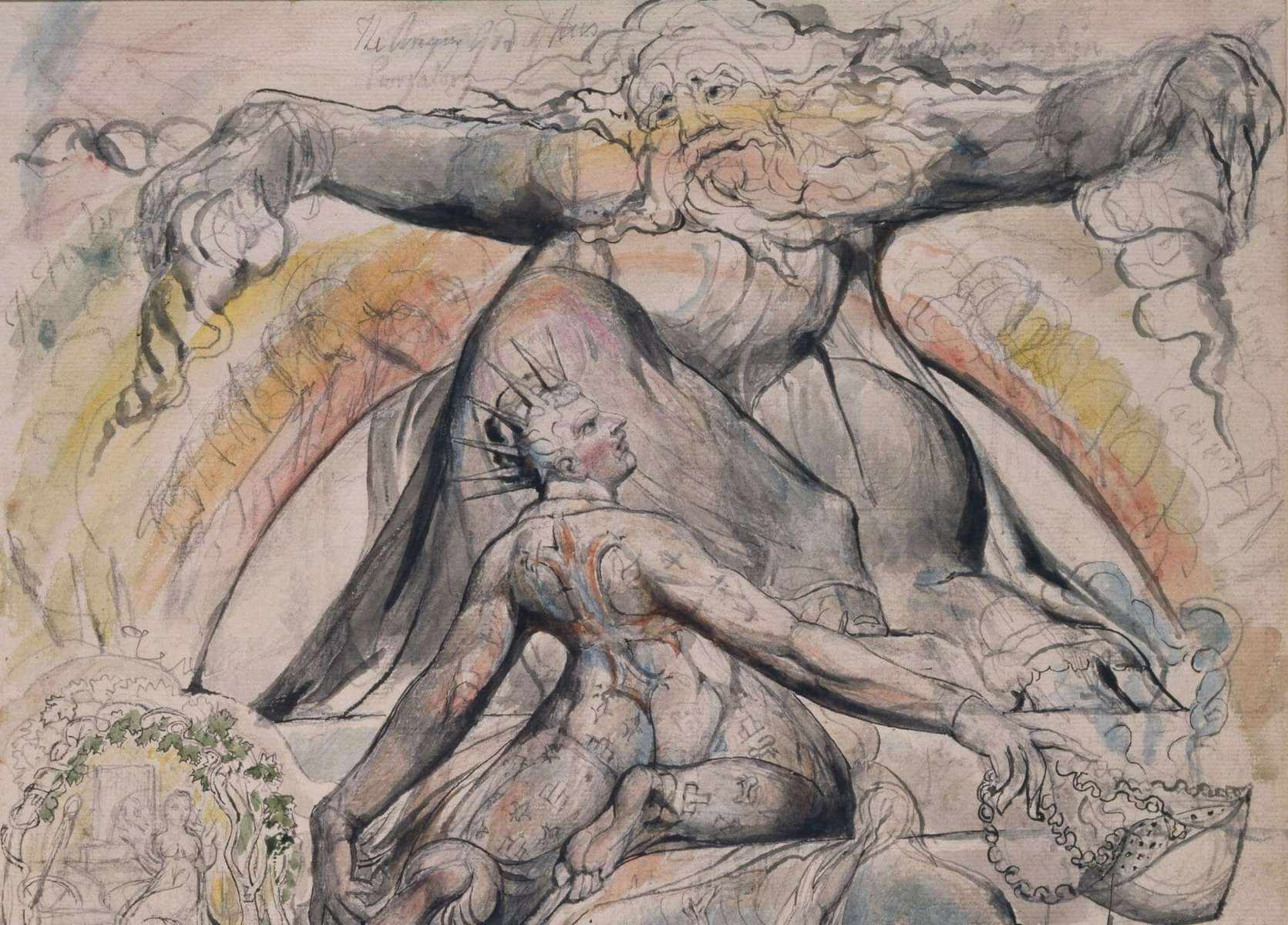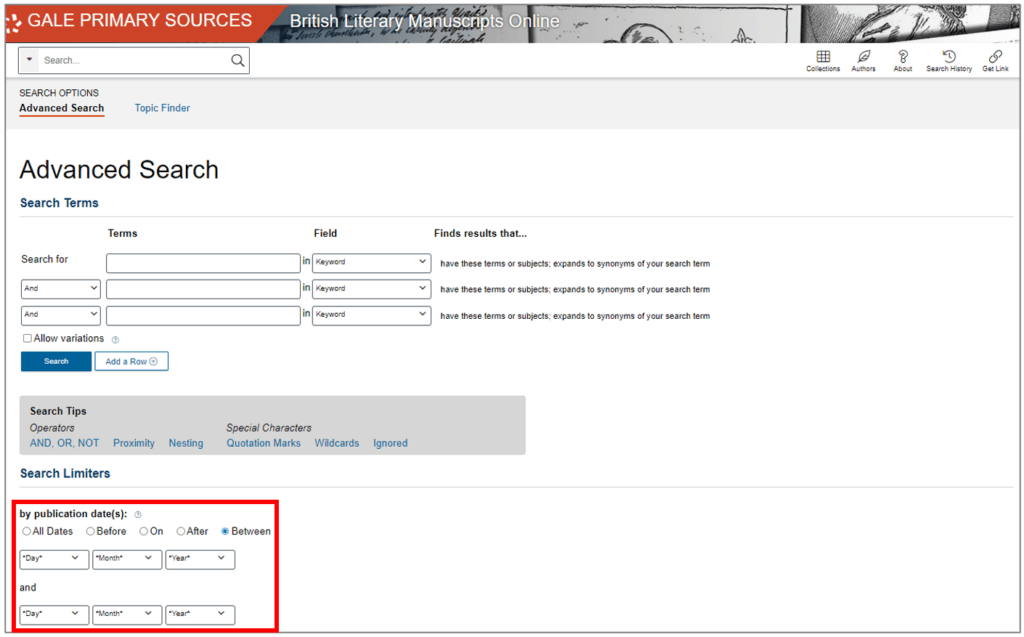| By James Carney, Gale Ambassador at King’s College London |
William Blake is widely considered one of Britain’s finest artists of all time. From painters of the Pre-Raphaelite Brotherhood to writers of the Irish Literary Revival, Blake’s influence permeates the artistic tradition. Therefore, it can come as a surprise to many that Blake’s work passed largely unrecognised during his lifetime. It is only posthumously that his legacy as we know it today has developed. This can be extensively explored using Gale’s British Literary Manuscripts Online: c. 1660-1900 archive.
While too early to be a theoretical avant-garde, there persists a strong possibility that such a lack of success antemortem is attributable to the incongruity of Blake’s transgressive idiosyncrasy and the eighteenth-century Christian authority to which he belonged. However, this unique creativity and these distinctive perspectives have arguably contributed to his endurance in art as well as in politics. Scholars have frequently characterised Blake as sceptical of authority in all forms and this scepticism has marked him as influential to contemporary political issues.
For example, his opposition to rigid Christian marriages, forerunning the “free love” movement, has influenced modern ideas about sexual liberation, LGBTQ+ rights and feminism. Furthermore, his abhorrence of slavery and belief in universal equality demonstrates a concern for racial justice which resonates with the aims of our current Black Lives Matter movement. Clearly, the power of William Blake lies in his legacy, which it is now possible to trace using British Literary Manuscripts Online.

Eaton, W.G. ‘Utterly utter quadrille’ [four individuals holding hands in a theater lobby; posters of Wilde, Whistler & Rossetti in background; sunflower, lily at margins] [art print]. 1881 …William Andrews Clark Memorial Library, University of California at Los Angeles. British Literary Manuscripts Online, https://link.gale.com/apps/doc/MC4400003229/BLMO?u=webdemo&sid=bookmark-BLMO&xid=0df8360e&pg=1
Blake’s Notebook – “Hold infinity in the palm of your hand”
One of the most direct ways to explore the core of Blake’s artistry is through a copy of his original notebook, available in British Literary Manuscripts Online: c. 1660-1900. The manuscript comes to Gale from the British Library and contains Blake’s autograph drafts of poems and prose, as well as ink sketches of all manner of scenes, creatures and figures. The manuscript represents the bare bones of Blake’s creative process, offering a tangible and visual substantiation of the development of his artistry. Through the dense ink blots, one can trace the development of ideas that endured and materialised into final pieces, as well examine those that failed to grow beyond the page.

THE NOTEBOOK OF WILLIAM BLAKE, sometimes known as the ‘Rossetti Manuscript’, comprising (ff.1-61) Blake’s autograph drafts of poems and prose, along with numerous sketches and designs executed mostly in pencil; circa 1787-1818. 1787-1982. MS British Library Additional Manuscripts MS 49460. British Library. British Literary Manuscripts Online, https://link.gale.com/apps/doc/MC4400003970/BLMO?u=webdemo&sid=bookmark-BLMO&xid=438f988a&pg=1
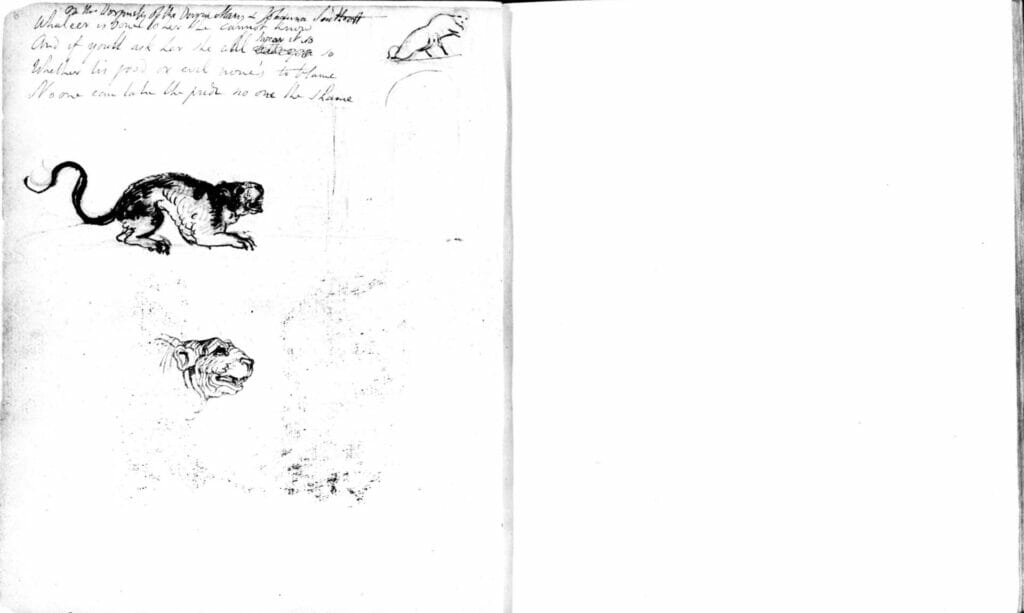
THE NOTEBOOK OF WILLIAM BLAKE, sometimes known as the ‘Rossetti Manuscript’, comprising (ff.1-61) Blake’s autograph drafts of poems and prose, along with numerous sketches and designs executed mostly in pencil; circa 1787-1818. 1787-1982. MS British Library Additional Manuscripts: Additonal Manuscripts Add. MS 49460. British Library. British Literary Manuscripts Online, https://link.gale.com/apps/doc/MC4400003970/BLMO?u=webdemo&sid=bookmark-BLMO&xid=438f988a&pg=6
The sketches exhibit his raw talent for depicting what lay in the depths of his imagination. They can now be dissected by scholars to understand the techniques and complexity with which he worked and evolved. Because of how direct and rich the insight into the origins of Blake’s artistry and ideas is here, one cannot dispute the value of this notebook to an examination of his legacy. The notebook acts as a key to unlocking the essential creative drives, processes and products that crystallised into a bequest sufficiently imaginative and innovative to endure beyond an apparently private life.
The first draft of “Tiriel” – “Was once only imagined”
Perhaps the most fascinating primary source from a literary perspective found in the British Literary Manuscripts Online: c. 1660-1900 archive is the first draft of Blake’s seminal narrative poem “Tiriel’’. “Tiriel” holds significance in Blake’s artistic development as it was the first poem in which he used free septenaries, which became characteristic of his later verse, and because preliminary elements of his famous mythological system appear throughout. Critics have received “Tiriel” in a vast interpretative range, from an analysis of the devastating decay of Materialism at the end of the Enlightenment to the politics of revolution, or even as a criticism of artistic affectations in the nineteenth century.
Clearly, the poem holds nuance, profundity, and great influence for both Blake’s creativity and politics. The accessibility of the first draft through Gale is therefore monumental. One can witness the formation and composition of this deeply symbolic narrative, possibly detect evidence for intention and consequently bolster interpretations about Blake’s mythology, opinions, and poetic process. On the autograph manuscript one can discern many corrections and cancelled lines, especially in part 8, which can provide insight into his artistry and motivations as Blake lays bare the construction of his work. Because of the significance of “Tiriel” to Blake’s artistic (and possibly political) expression, this resource is invaluable in tracing the development of his legacy.
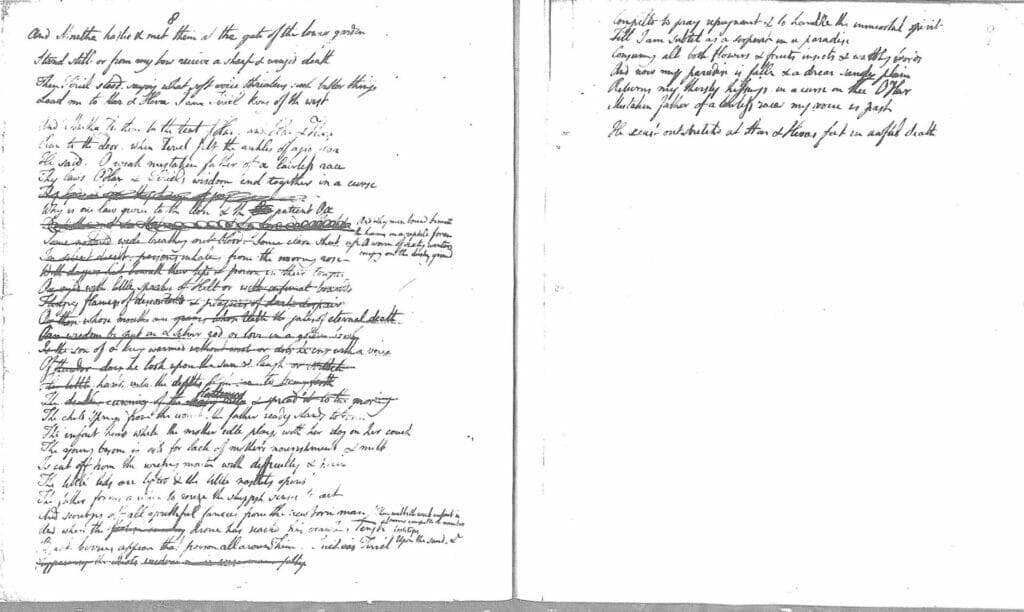
‘TIRIEL’: a poem, by William Blake. Autograph. With many corrections and cancelled lines, particularly in part 8, where a passage (beg. ‘I am Tiriel King of the West’) has been written with a different pen, though at the same period, The occurrence in the. 1788-1789. MS Egerton Manuscripts Egerton MS 2876. British Library. British Literary Manuscripts Online, https://link.gale.com/apps/doc/MC4400002950/BLMO?u=webdemo&sid=bookmark-BLMO&xid=6216bb14&pg=9
Legacy works – “As it is: infinite”
A crucial benefit of the British Literary Manuscripts Online: c. 1660-1900 archive is the diversity of works that it presents, both in primary literature and in reception. Through the search function, a range of resources on a writer or a topic become instantly accessible. The ability to filter by time period engenders a refined and specific search for pertinent material. Such a feature becomes particularly useful for tracing the legacy of an individual, so that later reception and impact can be observed. Blake’s legacy can be easily traced across various documents using the Advanced Search, as seen in the screenshot below.
One of the first relevant materials that appears is a drafted review by Oscar Wilde of Dante Gabriel Rossetti’s poetry. Blake’s original notebook (which I explored above) was frequently coined as “The Rossetti Manuscript”’ because of the great extent to which Blake inspired the Pre-Raphaelite artist. The reviewer, Wilde, also attributes frequent influence for his works to Blake. Therefore, this review of the poetry can be read as a dialogue between two artists with an undercurrent of Blake’s creative inspiration that reveals the presence of a legacy.
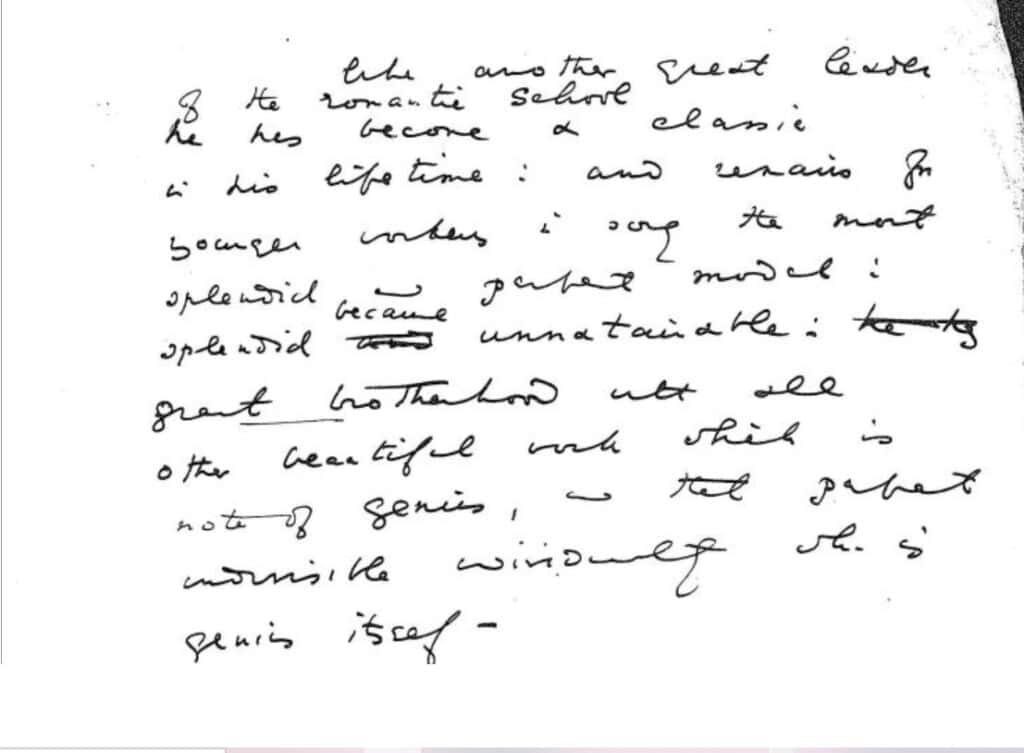
Further, and arguably more direct, evidence of Blake’s legacy emerges in the preservation of his artistic efforts by William Butler Yeats and Edwin John Ellis, who published and edited Blake’s unfinished prophetic book, “The Four Zoas”. Yeats and Ellis often admitted to inspiration from Blake, and therefore strove to serve his legacy by preserving some of his unrecognised genius for future generations. The British Literary Manuscripts Online: c. 1660-1900 archive presents the first publication of “The Four Zoas” for complete exploration so that Blake’s genius doesn’t fade with the passing of time.
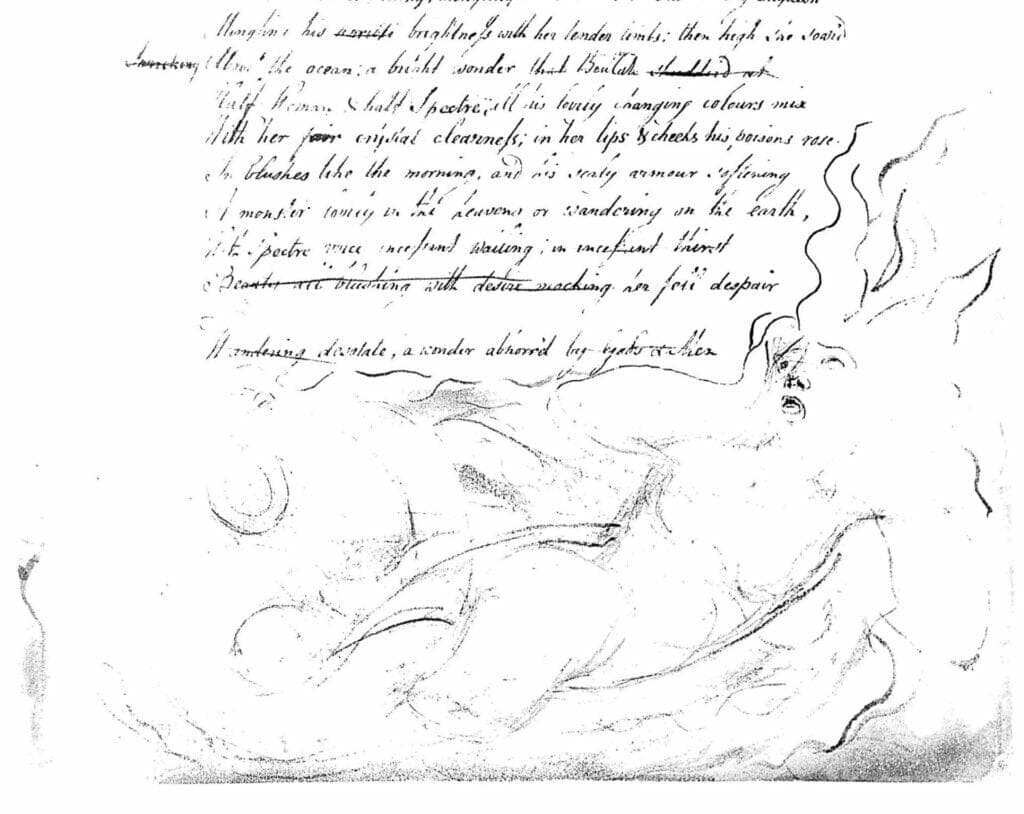
‘The Four Zoas’, by William Blake: the poem first published by Ellis and Years, The Works of William Blake, London, 1893. … MS British Library Additional Manuscripts: Additonal Manuscripts Add. MS 39764. British Library. British Literary Manuscripts Online, https://link.gale.com/apps/doc/MC4400002092/BLMO?u=webdemo&sid=bookmark-BLMO&xid=3ad14d3c&pg=11
In all these ways, it is possible to trace the legacy of William Blake through the British Literary Manuscripts Online: c. 1660-1900 archive, resulting in a lasting impression of his status as a notional father of the Pre-Raphaelites and further artists, as well as a proponent of the politics of liberation that still resonate with conventional wisdom.
If you enjoyed reading about William Blake and his legacy, you might also enjoy these other blog posts exploring literary themes:
- Misanthrope or Friend of Man? Revising the Byronic Hero with Gale Primary Sources
- How can pandemic literature help us reflect on the virus and a post-Covid future?
- Tracking the evolution and reception of monstrosity in literature from the nineteenth century to modern day
- Finding Black Female Authors in the Women’s Studies Archive
- Know Your Authors: Dictionary of Literary Biography
Blog post cover image citation: The Mission of Virgil by William Blake. Image shared by Birmingham Museums Trust available on Unsplash.com.

